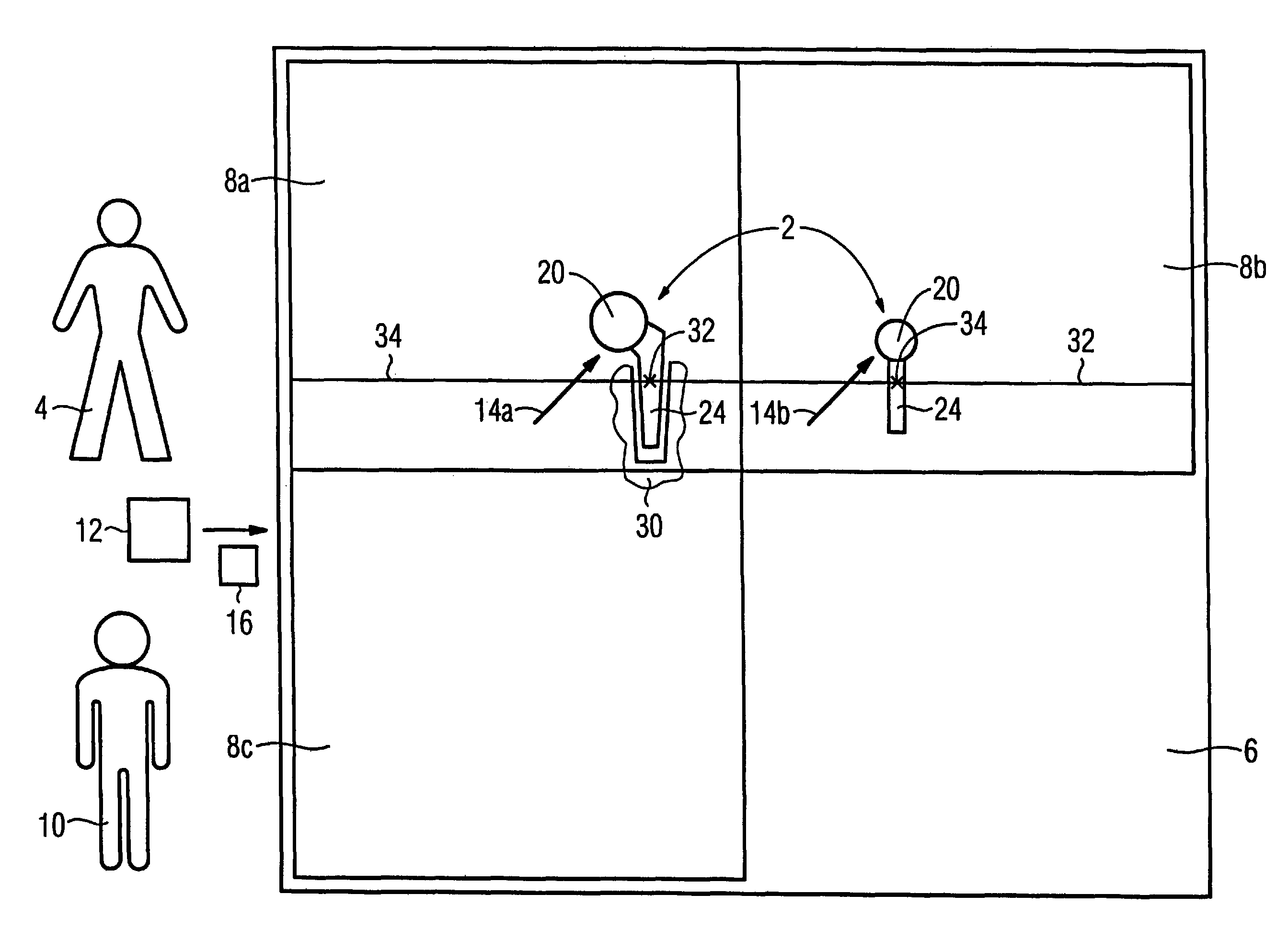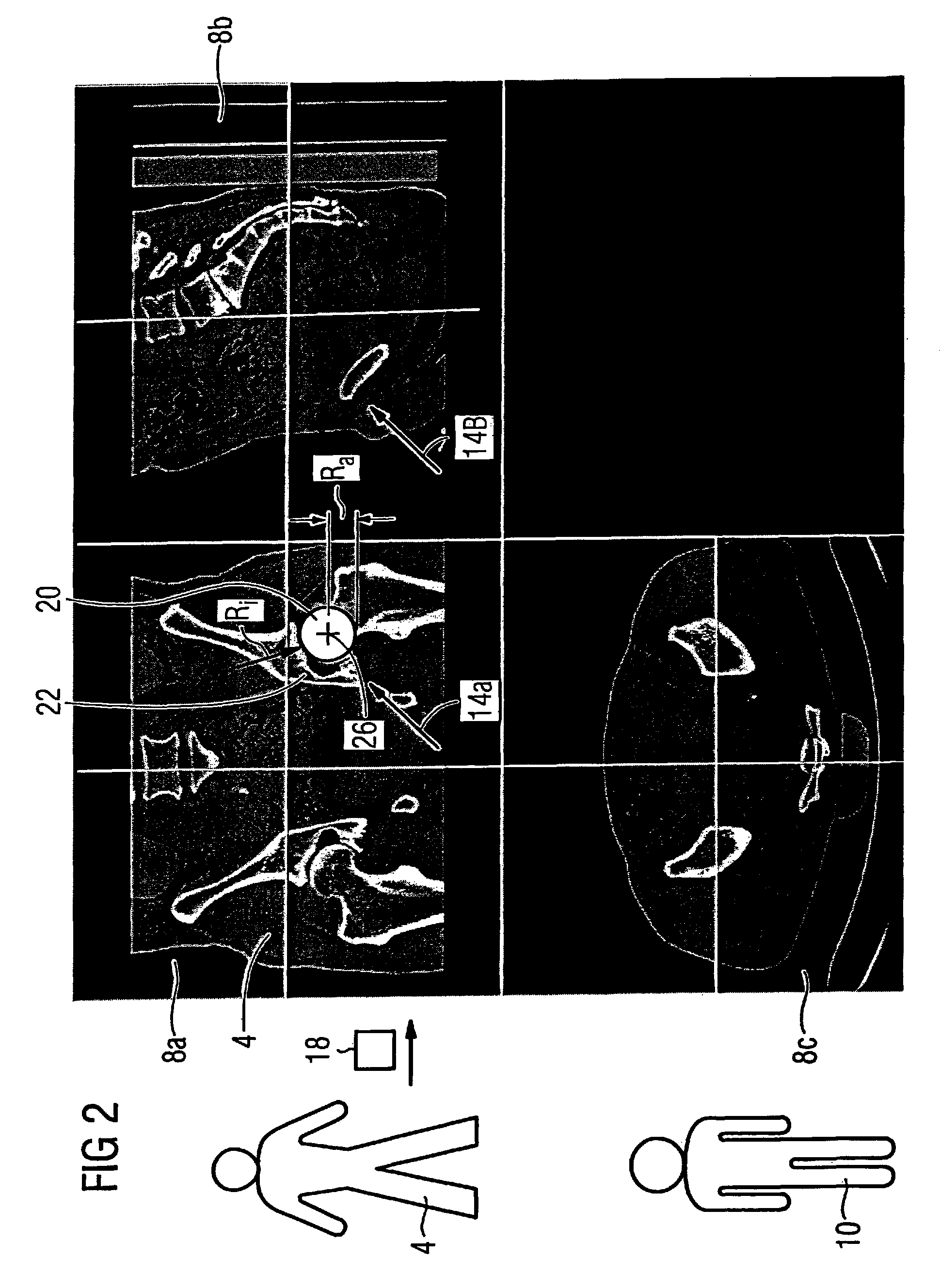Method for virtual adaptation of an implant to a body part of a patient
a technology for virtual adaptation and implants, applied in the field of virtual adaptation of implants to the body parts of patients, can solve the problems of not being suitable for use in a procedure, limited to two-dimensional representations, and not being able to proceed automatically
- Summary
- Abstract
- Description
- Claims
- Application Information
AI Technical Summary
Benefits of technology
Problems solved by technology
Method used
Image
Examples
Embodiment Construction
[0043]The following exemplary embodiment describes the virtual preoperative placement and adaptation of an artificial hip joint 2 as an object in a patient 4 by a physician 10. The method exemplarily operates with the MPR representation of image data on a monitor 6 of a medical operation planning workstation (CAD system) (not shown).
[0044]FIG. 1 shows the monitor 6 on which three windows 8a-c are shown. The windows 8a-c correspond to the arrangements of a frontal (8a), lateral (8b) and axial (8c) view that are typical for medical 3D views, for example for a patient-related image data. Operator of the method is the physician 10 who, dependent on the patient 4 (for example according to the patient's body size), selects a hip joint 2 deemed, from the size, as approximately fitting from a number of available hip joints in an implant database 12. For representation of the hip joint 2 on the monitor 6, its 3D image data 16 are taken from the database 12. The selected hip joint 2 is then p...
PUM
 Login to View More
Login to View More Abstract
Description
Claims
Application Information
 Login to View More
Login to View More - R&D
- Intellectual Property
- Life Sciences
- Materials
- Tech Scout
- Unparalleled Data Quality
- Higher Quality Content
- 60% Fewer Hallucinations
Browse by: Latest US Patents, China's latest patents, Technical Efficacy Thesaurus, Application Domain, Technology Topic, Popular Technical Reports.
© 2025 PatSnap. All rights reserved.Legal|Privacy policy|Modern Slavery Act Transparency Statement|Sitemap|About US| Contact US: help@patsnap.com



